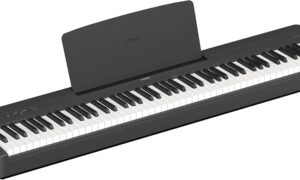As artificial intelligence systems grow more advanced, the need for hardware that supports both training and inference has intensified. Traditionally, these phases of AI computation relied on separate infrastructures, causing inefficiencies in performance, energy use, and scalability. Hybrid chip architectures are now challenging this divide by offering unified solutions that serve both processes on a single platform. In a recent study, Deepika Bhatia explores how these innovations are transforming AI hardware and enabling new possibilities in edge computing, thermal control, and software optimization.
The Core Revolution: Unified Memory and Compute Units
Traditional AI systems often require separate infrastructures for training and inference, leading to inefficiencies in both cost and energy. Hybrid chips disrupt this paradigm by consolidating specialized compute units within a shared memory framework. This advancement has led to up to 83% memory bandwidth efficiency and a 45% improvement in latency. These chips intelligently allocate resources in real time, improving utilization by 67% and reducing memory overhead to below 5%. This means fewer hardware transitions, lower operational complexity, and a more seamless AI lifecycle.
Cool Under Pressure: Thermal Management in Hybrid Systems
Handling high computational loads comes with thermal challenges. Hybrid chips are now paired with sophisticated thermal control mechanisms like vapor chamber cooling and heterogeneous integration. These technologies allow devices to operate under power densities exceeding 500 W/cm² while maintaining temperatures below critical thresholds. With innovations like dynamic thermal algorithms, systems have achieved 23% reductions in peak temperature without performance loss crucial for maintaining reliability and durability during sustained use.
From Cloud to Edge: A Decentralized Intelligence Shift
Edge computing is emerging as a strategic frontier for AI, and hybrid chips are central to this shift. With the ability to perform both training and inference locally, edge devices can now reduce energy use by up to 65%, operate under constrained power conditions (10–15W), and maintain critical functions during network outages. In domains like robotics and industrial automation, these chips enable local inference at speeds of up to 120 frames per second and allow real-time model updates improving system responsiveness by 40% and latency by 75%. Bandwidth reduction of up to 85% in IoT networks further supports sustainable edge deployments.
Smarter Software: Optimized Stacks for Performance
Hybrid chip capabilities are amplified by software stacks tailored for dynamic workloads. Compiler technologies designed for these architectures deliver up to 35% performance improvements and reduce bandwidth usage by 42%. Through operation fusion and intelligent scheduling, they maintain high efficiency even when shifting between training and inference. Runtime systems complement these gains with adaptive scheduling, achieving up to 38% power efficiency and reducing latency by 25%. These software advances ensure hardware is consistently leveraged to its fullest potential, even under changing operational conditions.
Deployment That Learns: Adapting Models on the Go
Deployment strategies have also evolved, moving toward continuous learning and distributed model management. New frameworks support real-time adaptation with up to 32% improvement in model responsiveness and 40% gains in distributed resource utilization. This is especially significant for edge environments where learning must happen locally with minimal latency. These systems help strike a balance between processing power and adaptability, ensuring that devices remain efficient and context-aware throughout their deployment.
Looking Ahead: The Promise of Reconfigurable Systems
The future of hybrid chips lies in reconfigurability and domain-specific acceleration. FPGA-based systems are showing performance boosts of 42% while cutting power consumption by 35%. Such platforms adapt their configurations based on workload demands, offering both flexibility and efficiency. Advanced memory systems and AI-driven workload management improve system efficiency by up to 48% and reduce energy usage by 30%. As these reconfigurable designs gain traction, hybrid chips are poised to serve a broader range of applications with greater agility.
In conclusion, the innovations described by Deepika Bhatia illuminate a path toward unified, intelligent AI systems that no longer need to compromise between training power and deployment efficiency. With advancements in architecture, thermal control, edge adaptability, and smart software integration, hybrid chips are redefining what is possible in AI computing, building a bridge between two once-distinct realms and laying the foundation for scalable, sustainable, and responsive AI.





























